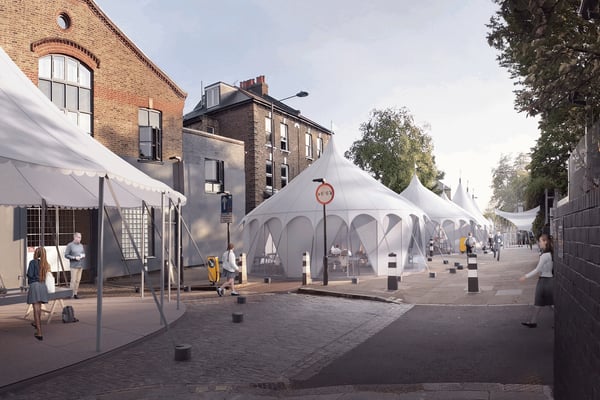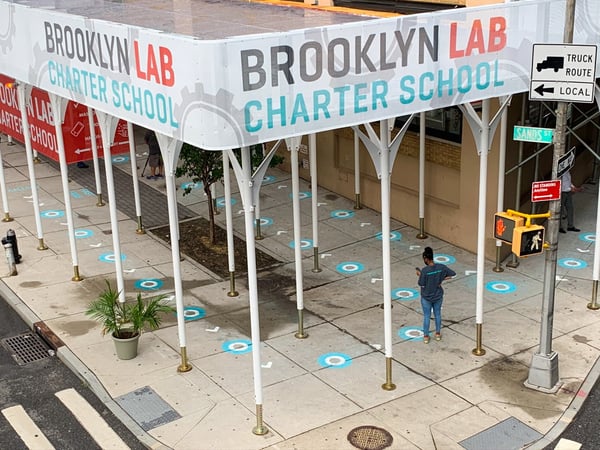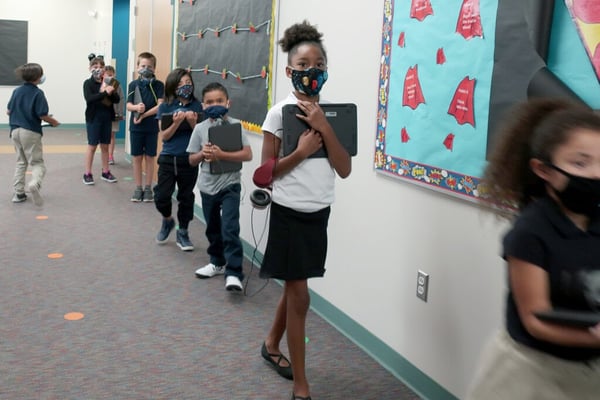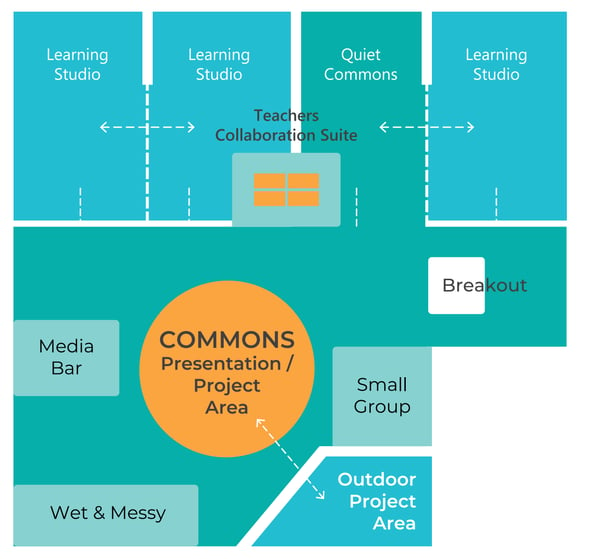This fall, millions of students are back in school amid the ongoing COVID-19 crisis. While virtual learning continues to replace some in-person learning for many, experts agree that social interaction is an important and irreplaceable aspect of education, particularly for young students. Education design is therefore a hot topic, as these spaces must be adapted to the need for adequate personal space, ventilation, and hygiene.
Because of the rapid response demanded by the quick onset of the pandemic, schools have had to implement short-term measures to minimize the risk of exposure for both students and teachers. Some of the immediate solutions provide a framework for adapting older buildings, where large-scale renovations are not possible. New construction will have a researched framework for designing safe spaces that are conducive to the interactions students need to maximize their educational experience. In scenarios where the budget is too small to implement any structural changes or new construction, creative design can still retrofit existing structures and spaces to be suitably safe. What can designers expect to see and help to create in the schools of our “new normal”?
Retrofitting Old Spaces
Most school districts can only afford to modify their existing spaces to accommodate these new needs. Here are some of the concepts schools across the world are using or considering:
- Repurposing cafeterias, gymnasiums, and libraries as larger classroom spaces
- Using modular, movable furniture and partitions

(PBDW Architects Classroom Furniture Plans. Source: Architect Magazine)
- Replacing fixtures for lights, bathroom sinks and toilets, and even doors with touchless, sensor-activated models
- Adding hand washing stations in circulation spaces, ideally foot pedal-enabled
- Tents as outdoor classrooms for year-round use

(Curl la Tourelle Head's outdoor tent concept. Source: Dezeen)
- Quick-fix ventilation improvements like opening windows and doors, installing window fans, using portable air purifiers with HEPA filters and, when possible, upgrading centralized systems to meet 2020 standards
- Adding canopies in front of the main entrances/exits to allow for socially distanced circulation and entry temperature checks regardless of weather

(WXY and SITU designed canopy for the Brooklyn LAB Charter School. Source: New York Times)
- Focusing on natural elements such as indoor/outdoor connection, natural light, cooler temperatures and good air exchange.
- Using naturally antimicrobial materials that are also budget-friendly and durable, like linoleum, while using fewer soft materials.
- Looking to the co-working model: quiet pods for studying, one-on-one meeting spaces and small breakout areas, all interspersed across flexible spaces that promote interactive learning.
Even in cases where the lack of funds prohibits any meaningful furniture purchases or structural changes, low-cost design solutions can help provide visual cues to promote social distancing. For example:
- Using color (paint, or even tape) to delineate spaces, 6-feet spacing cues, and one-way circulation

(Students in a Colorado Elementary School maintain social distance. Source: CPR News)
- Simple canopies to maximize outdoor space in lieu of enclosed tents
- Rearranging desks to be spaced farther apart and no longer facing one another
- Employing social design, such as having teachers move from classroom to classroom, where students stay in one space and act like a pod, instead of the students rotating to different classrooms based on the subject; this minimizes the number of people moving throughout the building and limits exposure
New Construction
Construction plans for new schools may adopt new concepts to accommodate for hygiene and social distancing, and some of those design conventions may look to the past. Philip Marsh, a director of dRMM Architects, shared with Pamela Buxton of The RIBA Journal:
“We recently made a proposal for a new primary school which includes outdoor classrooms that are a contemporary version of Jan Duiker’s 1927 Open Air School; this was built in Amsterdam to help physically weak children gain strength with the help of sun and fresh air. These classrooms could be orientated to the south for solar gain, and make some concession to comfort with a simple glazed facade and canopy. As well as having the benefit of getting the children out into the landscape, such low-cost spaces will free up more room within schools.”
Other trends, some of which are also a throwback to the to the past, include:
- Focusing on natural elements such as indoor/outdoor connection, natural light, cooler temperatures and good air exchange.
- Using naturally antimicrobial materials that are also budget-friendly and durable, like linoleum, while using fewer soft materials.
- Looking to the co-working model: quiet pods for studying, one-on-one meeting spaces and small breakout areas, all interspersed across flexible spaces that promote interactive learning.
 (Prakash Nair and Roni Zimmer Doctori’s diagram for learning community concept. Source: Education Design International)
(Prakash Nair and Roni Zimmer Doctori’s diagram for learning community concept. Source: Education Design International)
The school year has only just begun, so it is difficult to know if the current measures in place will be effective in preventing the spread of the novel coronavirus. Across the U.S., schools are abiding by hyper-local mandates that dictate whether they open at full capacity, limited capacity, or if they must go entirely virtual. In the coming months, researchers will have more data on which design measures have proven effective, and the new standard of education design will continue to take shape. Stay tuned to Design Manager for updates on design in a post-COVID world.

